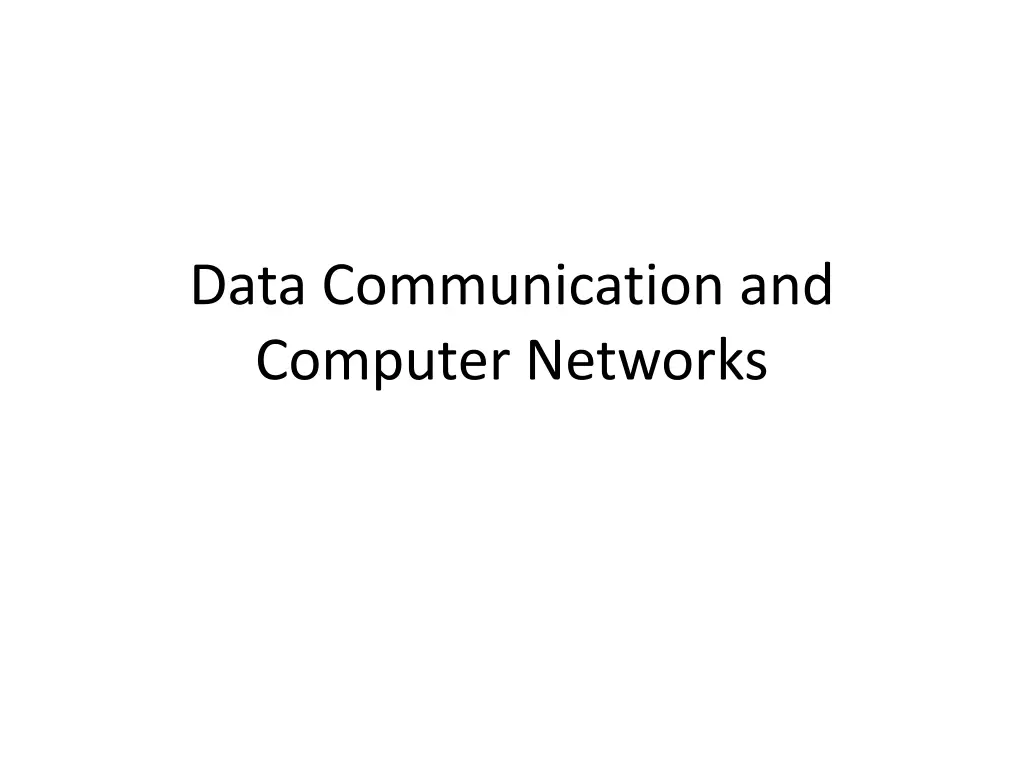
Understanding Data Communication and Networks
Explore the concepts of Frequency Shift Keying (FSK) and Binary Frequency Shift Keying (BFSK) in data communication and computer networks. Learn about the generation, implementation, and detection of FSK signals, as well as Phase Shift Keying (PSK) techniques like Binary PSK (BPSK).
Download Presentation

Please find below an Image/Link to download the presentation.
The content on the website is provided AS IS for your information and personal use only. It may not be sold, licensed, or shared on other websites without obtaining consent from the author. If you encounter any issues during the download, it is possible that the publisher has removed the file from their server.
You are allowed to download the files provided on this website for personal or commercial use, subject to the condition that they are used lawfully. All files are the property of their respective owners.
The content on the website is provided AS IS for your information and personal use only. It may not be sold, licensed, or shared on other websites without obtaining consent from the author.
E N D
Presentation Transcript
Data Communication and Computer Networks
FSK In frequency shift keying, the frequency of the carrier signal is varied to represent data. The frequency of the modulated signal is constant for the duration of one signal element ,but changes for the next signal element if the data element changes. Both peak amplitude and phase remain constant for all signal elements. BFSK One way to think about binary FSK (or BFSK) is to consider two carrier frequencies. In Figure, we have selected two carrier frequencies, f} and12. We use the first carrier if the data element is 0; we use the second if the data element is 1. However, note that this is an unrealistic example used only for demonstration purposes. Normally the carrier frequencies are very high, and the difference between them is very small.
BFSK Generation . Signal =>
There are two implementations of BFSK: non-coherent and coherent. In non-coherent BFSK, there may be discontinuity in the phase when one signal element ends and the next begins. In coherent BFSK, the phase continues through the boundary of two signal elements. Non-coherent BFSK can be implemented by treating BFSK as two ASK modulations and using two carrier frequencies. Coherent BFSK can be implemented by using one voltage-controlled oscillator (VeO) that changes its frequency according to the input voltage. Figure shows the simplified idea behind the second implementation. The input to the oscillator is the unipolar NRZ signal. When the amplitude of NRZ is zero, the oscillator keeps its regular frequency; when the amplitude is positive, the frequency is increased.
Detection Both envelope detection and coherent detection Advantage: FSK is less susceptible to noise than ASK Disadvantage: Bandwidth twice that of ASK
PSK(phase Shift Keying) In phase shift keying, the phase of the carrier is varied to represent two or more different signal elements. Both peak amplitude and frequency remain constant as the phase changes. Today, PSK is more common than ASK or FSK. BPSK(Binary phase Shift Keying) The simplest PSK is binary PSK, in which we have only two signal elements, one with a phase of 0 , and the other with a phase of 180 . Figure 5.9 gives a conceptual view of PSK.
